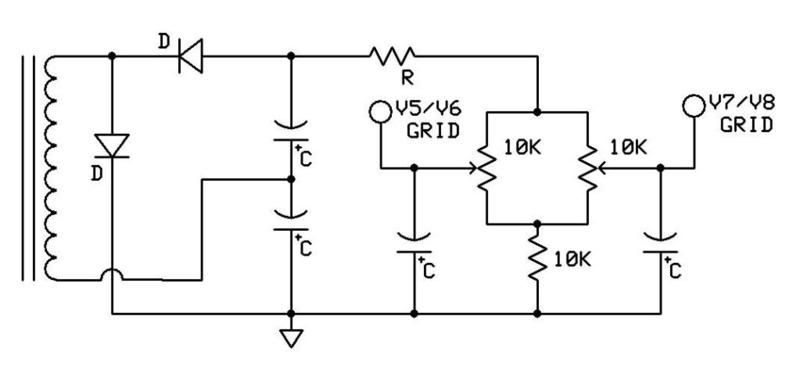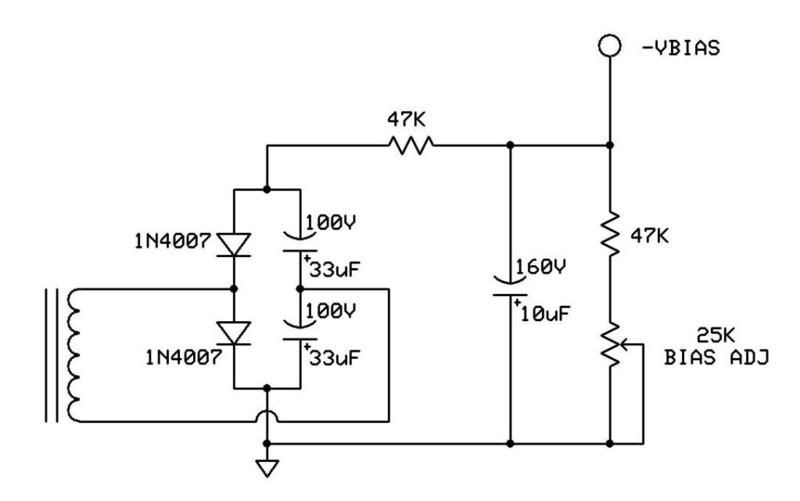Hello,
I need some opinions on a biasing issue. I have a Sound City 120 that was converted over to DR103 specs. The negative voltage on the control grid is appx -37 with a 47k resistor/22k bias pot adjust in parallel with the 100uf bias cap going to ground. The power tubes are around 68ma WAY off the safe margin and the bias pot adjust seems to only adjust the negative voltage by -1v if that.
Raising the bias resistor in 10k increments increases the negative voltage in very small steps. In order to get the ma per tube in mid to high 30's ma I have had to go up to a 2.7meg resistor. This just seems too high of a resistor value but it get's it into the safe ma draw range.
The PT bias winding is appx 35v before it's rectified...it's really enemic. There is a 1k resistor after the bias diode. I would like to avoid buidling a voltage dubbler for the bias if possible. I could tie into the 350v sec on the PT taps to get more negative bias but would rather not do this if I can.
Anyway's it just seems an awefully high resistor value to get this amp in a safe bias range. The old schematics call for a 47k, that's not going to work at all. Is using a 2.7 meg resistor to get the neg voltage in range a problem?
Thanks for reading...
Ampzone
I need some opinions on a biasing issue. I have a Sound City 120 that was converted over to DR103 specs. The negative voltage on the control grid is appx -37 with a 47k resistor/22k bias pot adjust in parallel with the 100uf bias cap going to ground. The power tubes are around 68ma WAY off the safe margin and the bias pot adjust seems to only adjust the negative voltage by -1v if that.
Raising the bias resistor in 10k increments increases the negative voltage in very small steps. In order to get the ma per tube in mid to high 30's ma I have had to go up to a 2.7meg resistor. This just seems too high of a resistor value but it get's it into the safe ma draw range.
The PT bias winding is appx 35v before it's rectified...it's really enemic. There is a 1k resistor after the bias diode. I would like to avoid buidling a voltage dubbler for the bias if possible. I could tie into the 350v sec on the PT taps to get more negative bias but would rather not do this if I can.
Anyway's it just seems an awefully high resistor value to get this amp in a safe bias range. The old schematics call for a 47k, that's not going to work at all. Is using a 2.7 meg resistor to get the neg voltage in range a problem?
Thanks for reading...
Ampzone


Comment